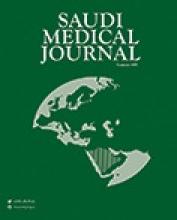Abstract
OBJECTIVE: To date, cadaveric organ donation is illegal in Egypt. Therefore, Egypt recently introduced living donor liver transplantation (LDLT), aiming to save those who are suffering from end stage liver disease. Herein, we study the evolution of LDLT in Egypt.
METHODS: In Egypt, between August 2001 and February 2004, we approached all centers performing LDLT through personal communication and sent a questionnaire to each center asking for limited information regarding their LDLT experience.
RESULTS: We identified and approached 7 LDLT centers, which collectively performed a total of 130 LDLT procedures, however, 3 major centers performed most of the cases (91%). Overseas surgical teams, mainly from Japan, France, Korea, and Germany, either performed or supervised almost all procedures. Out of those 7 LDLT centers, 5 centers agreed to provide complete data on their patients including a total of 73 LDLT procedures. Out of those 73 recipients, 50 (68.5%) survived after a median follow-up period of 305 days (range 15-826 days). They reported single donor mortality. Hepatitis C virus cirrhosis, whether alone or mixed with schistosomiasis, was the main indication for LDLT.
CONCLUSION: Egypt recently introduced LDLT with reasonable outcomes; yet, it carries considerable risks to healthy donors, it lacks cadaveric back up, and is not feasible for all patients. We hope that the initial success in LDLT will not deter the efforts to legalize cadaveric organ donation in Egypt.
- Copyright: © Saudi Medical Journal
This is an open-access article distributed under the terms of the Creative Commons Attribution-Noncommercial-Share Alike 3.0 Unported, which permits unrestricted use, distribution, and reproduction in any medium, provided the original work is properly cited.






